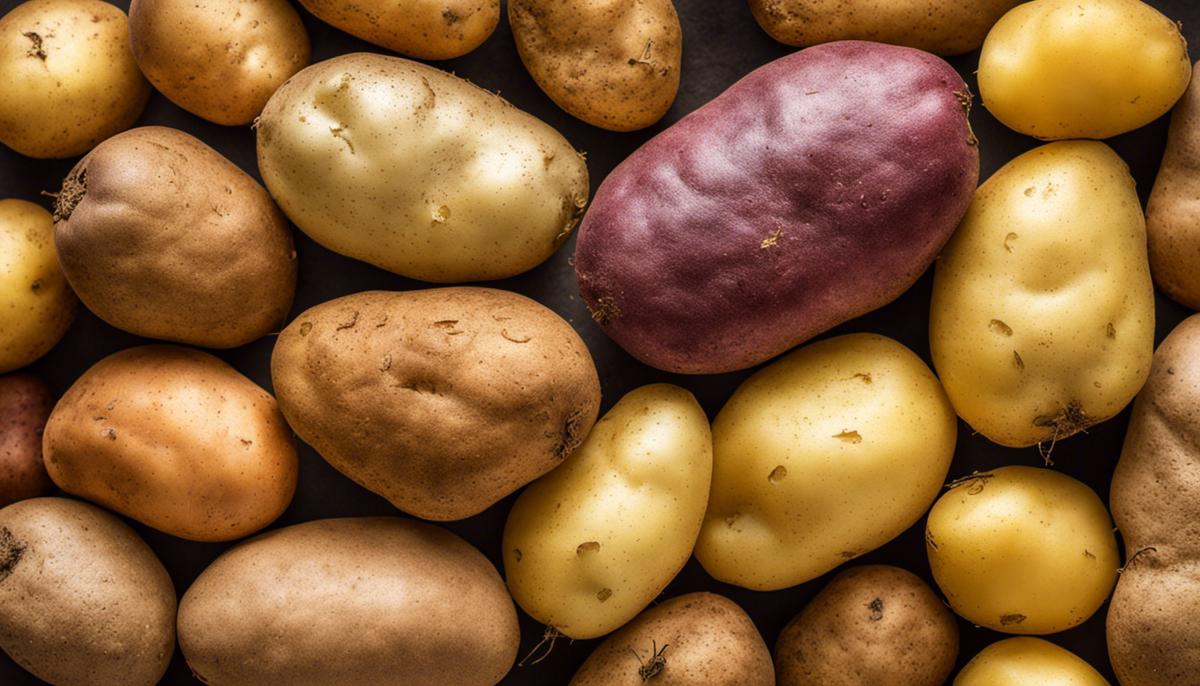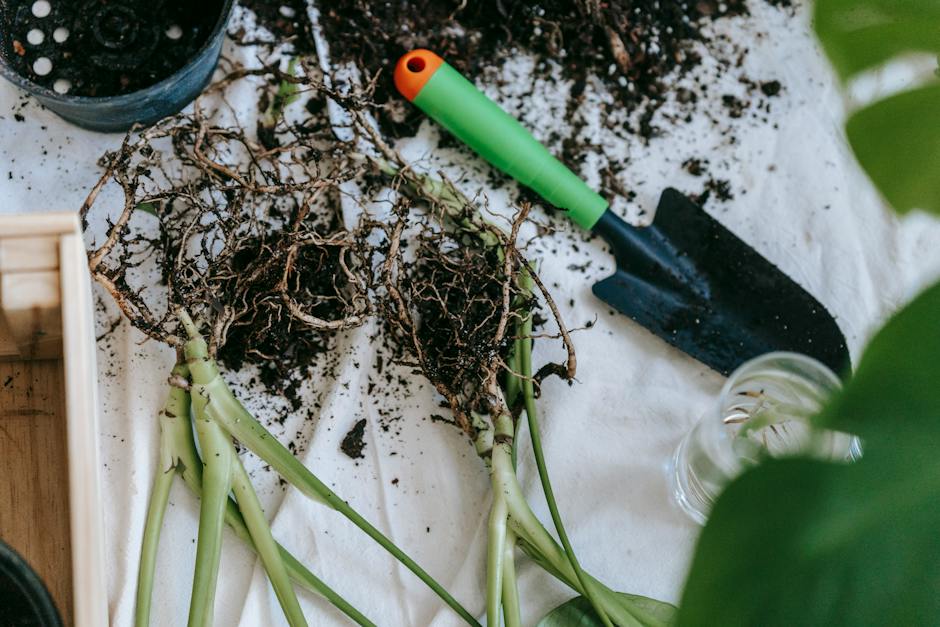A Simple Guide: Growing Potatoes in Water

Engaging with the wondrous world of gardening, a pastime rooted in nurturing and patience, often finds individuals exploring unconventional methods to cultivate nature’s bounty. Particularly intriguing is the practice of growing a potato from a potato in water, a process that harnesses the resilience and productive potential of this versatile vegetable. This guide will illuminate the path, leading you through the pivotal stages of selecting the right potato variety, preparing it for growth in a water-based environment, and diligently maintaining its progress. An exploration of botanical intricacies await every step of the way, promising an enriching journey, set amidst the enduring cycles of growth and regeneration.
Choosing the Right Potato
Excitingly, the world of potatoes is vast and fascinating, with a consistent force of versatility that any hobbyist crop-grower will appreciate. Diving into the topic of which type of potato to grow in water, however, leads us into an intoxicating journey of thin-skinned, starchy treasures. Buckle up as we go cruising past russets, eyeing Yukon golds, and marveling at the tangy red potatoes.
Beginning with the admirable Russet potatoes, this is a type that tends to do exceptionally well in water. Due to their impressive level of starchiness, Russets are able to thrive in water-based environments. Notably, Russets can pull significant nutrients from the water, which plays a considerable role in their impressive growth abilities. Hence if you’re looking for an excellent potato to grow in water, these furry-skinned champions should be on your list.
The journey doesn’t stop there; meet the incredibly versatile Yukon Gold potatoes. Their medium starch levels make them ideal for growth in a liquid environment, allowing them to absorb the valuable nutrients necessary for their development. Moreover, their unique flavor and soft texture are inarguable points in their favor.
Let’s not overlook the illustrious Red potato – an especially interesting tuber for hobbyists. While their waxy texture and low starch content denote less absorption capacity, these resilient reds can indeed grow well in water environments. The added bonus is the vibrant color they add to your water garden, making them an aesthetic choice as much as a culinary one.
Being aware of the varieties of potatoes and their unique characteristics remains an invaluable knowledge point for any potato-loving hobbyist. It deepens the appreciation, not just for the tuber’s versatility, but also for its subtle nuances – the slight differences in texture, flavor, and color that elevate a good stew, a comforting mash, or a classic roast.
The world of potatoes is diverse and vibrant. From the rough-skinned Russet, the golden Yukon, to the vibrant reds, you have a wealth of options when considering the best type to sprout in water. In the end, the choice boils down to personal preference and the ultimate ‘destination’ of the potato. So, whatever your menu or harvest desires might be, there’s a potato out there with your name on it – grow it in water and let the spuds do the talking.

Proper Potato Preparation
Potato Hydroponics 101: Preparing Your Spud to Sprout in H2O
In the fascinating realm of potato cultivation, taking a beloved spud to hydroponic heights can seem like a challenge. But fear not, fellow starch enthusiasts! With a bit of preparation, a dash of patience, and a solid understanding of our potato pals, you too can have a water-dwelling vegetation vessel in no time.
To begin your waterborne potato project, you’ll first want to select a healthy, ripe potato as your prime candidate. We’ve journeyed through the textures and flavors of Russet, Yukon Gold, and Red potatoes – each bearing their unique characteristics. Your choice of variety is entirely up to you and the taste you’re aiming for. But remember, a robust, disease-free potato is key to ensuring a successful sprouting journey.
Once you’ve got your ideal potato, the next step is to ensure that it’s properly “chitted.” What’s chitting, you ask? It’s merely the process of allowing your chosen potato to sit and sprout before planting. Practically all potatoes have “eyes” or buds from which sprouts grow, so you’ll want to identify these areas on your potato. Place your spud in a well-ventilated, cool, and dimly lit area. Soon enough, you’ll begin seeing small, fragile sprouts, indicating it’s nearly time to make the spud-to-water-transition.
Now that your potato is chitted and ready for action, you’ll need to gently slice away a 1-inch chunk encompassing the sprout. This section of potato will be your golden ticket to hydroponic success! This piece can then be suspended in water for further sprouting and eventual root growth. Use toothpicks or small kebab sticks to keep the potato piece half-immersed in the water, and voila! Your mini floating potato island is set.
It is crucial to place the potato piece in a clear, glass container filled with purified water for optimal growth conditions. Tap water often contains chlorine – not the best friend to our growing spuds. Also, the clear glass lets in the necessary sunshine while allowing you a sneak peek at the root growth.
Your potato must now bathe in a sunny yet not too hot spot – a windowsill that gets ample morning sunlight, for instance. Change the water every other day to ward off any foul algae, or root rot and ensure a healthy growing environment.
In about two weeks of thumb-twiddling anticipation, you should start seeing roots sprouting from the submerged part of the potato piece. That’s your cue to start rejoicing! You’re now officially a proud caretaker of a water-growing potato.
As your potato-plant-in-a-glass thrives, it’s going to need more nutrients; consider using a water-soluble plant food. Keep in mind the specificity of nutrient absorption in water-based environments, and remember, moderation is key. Overfeeding could do more harm than good.
And there you have it! While the world of potatoes is wide and diverse, growing one in water doesn’t have to be a daunting task. It’s an exciting process that can yield a bountiful harvest and even more enjoyment for potato enthusiasts. Let’s get those spuds sprouting!

Maintaining Potato Growth in Water
Starting with Confidence: Your Hydroponic Potatoes
In choosing a healthy potato for hydroponics, it’s essential to select a clean, good-sized specimen that shows no signs of rot or disease. Quality is critical. An unblemished potato presents the potential for a successful hydroponic experience. So, take your time to handpick the right one. A well-selected potato not only ensures top-quality progress, but also guarantees a rewarding journey in hydroponic gardening.
Let us now visit the world of ‘chitting’ potatoes. It sounds daunting, but really, it’s a simple process. It involves encouraging a potato to sprout before planting. Typically, place your select potato in a cool, light place to sprout. You’ll know it’s ready when sprouts begin to show. At this stage, the potato is less likely to rot in water during the hydroponics process.
Following sprouting, the chitted potato is ready for the water. Cut a small portion, about a quarter, from the potato, being sure to include one or two sprouts. This segment, containing a sprout or ‘eye,’ is the starting point for your underwater potato journey.
Creating the perfect, conducive environment for the potato to grow sprouts in water requires a well-lit, warm spot, like a windowsill. For optimal results, delicately suspend your chitted potato segment over a jar of clean water. The cut part should touch the water, but your sprouts should point upwards, above the water level.
Remember that sunlight is fundamental for the potato’s growth. Position it so the exposed segment receives sunlight. Change the water every few weeks to prevent mold and bacteria growth, ensuring it remains clear and fresh.
Punctuated by the rewarding sight of roots forming, your potato journey continues. This moment of success signifies the correct balance of sunlight and water. It provides the catalyst to continue the process with water-soluble plant food, topping up the essential nutrients to accelerate growth.
And now, sit back and enjoy the process. Observe the daily changes and progress. Marvel at how a small segment from a potato can grow a healthy, flourishing plant in just water. Your hydroponic potato journey is thrilling and deeply rewarding. This isn’t just about producing potatoes; it’s about the joy of learning, growing, and embracing hydroponics. This hobby opens a doorway to a new understanding of how growth can happen anywhere, even in a jar of water on a windowsill.

Embarking on the rewarding journey of growing a potato in water offers a unique blend of practicality and gardening intrigue. It encourages us to play an active role in the propagation cycle, offering invaluable insights into the resilience of plant life while also delivering a tangible, edible reward. The echo of each soft splash as your potato matures in its watery home serves as a constant reminder of nature’s flexibility, adaptability, and perseverance. Hence, invoking an increased appreciation for food’s arduous journey from soil to plate, the process defies what we traditionally perceive as the rules of cultivation. Now armed with the knowledge to select, cut, and care for your water-bound potato, you’re well-prepared to embark on this aquatic gardening adventure.



